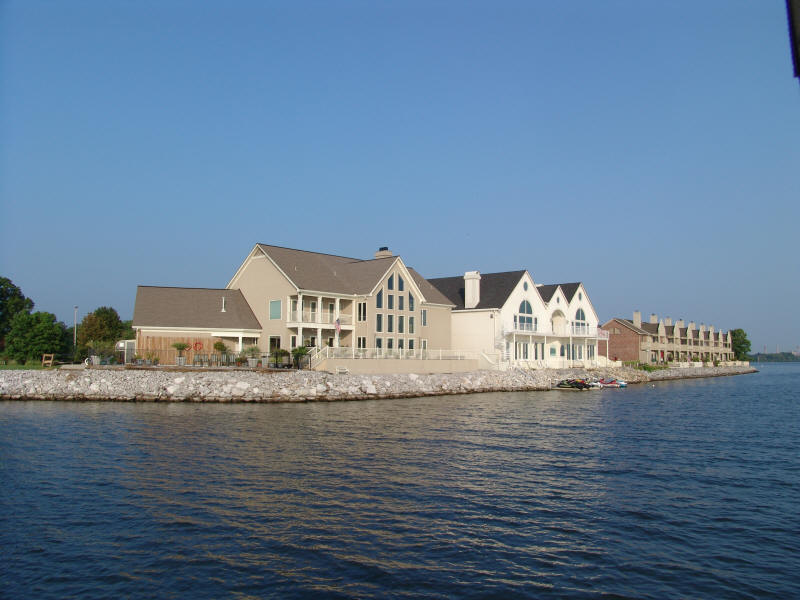
Day 7

Just down from the Riverwalk Marina on the opposite side are some new condos with perfect riverfront view on one side...
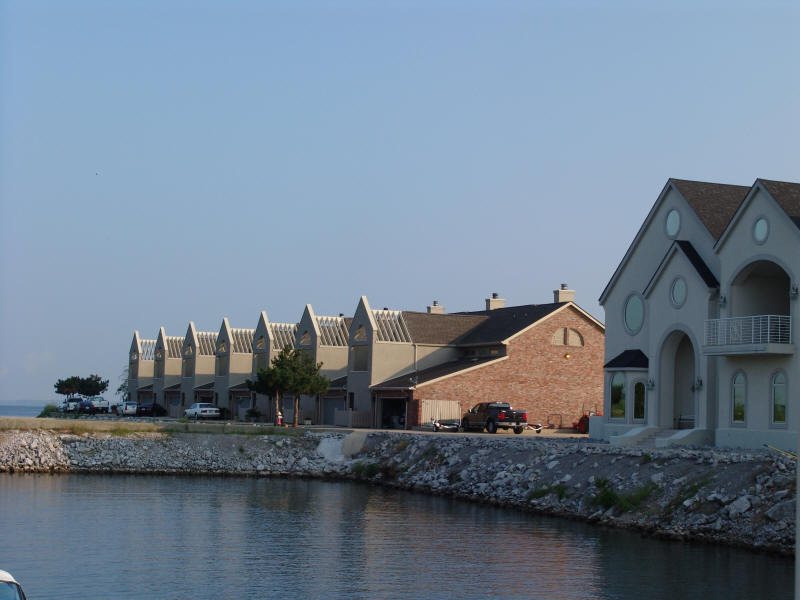
and protected anchorage on the back. Um, all that's missing are the, uh, DOCKS!
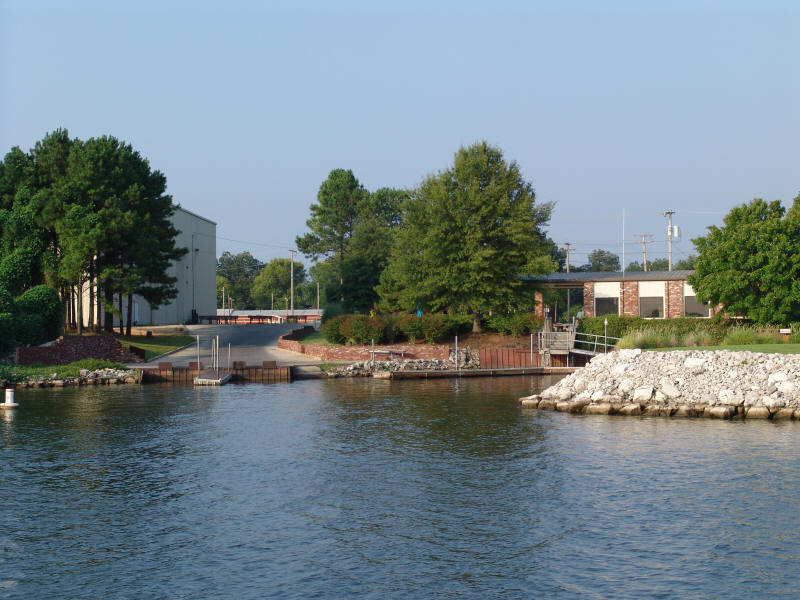
This is Brickyard Landing marina, with gas, right next door.
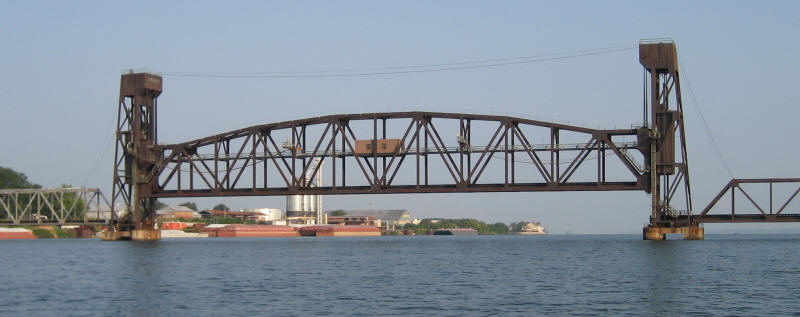
On our way out of Decatur, we approached this RR bridge which was completely down at the time and we couldn't be sure if we'd fit under (see span at right for the closed clearance). Our antenna probably reaches 18' above the water, so we called the bridge tender on the VHF who said "we're closed today!". After a good laugh, he opened it. He's located in the little box in the middle of the span. Wise guys. ;-)

I'm not sure what they are making here, but they are making (or using) a lot of it!
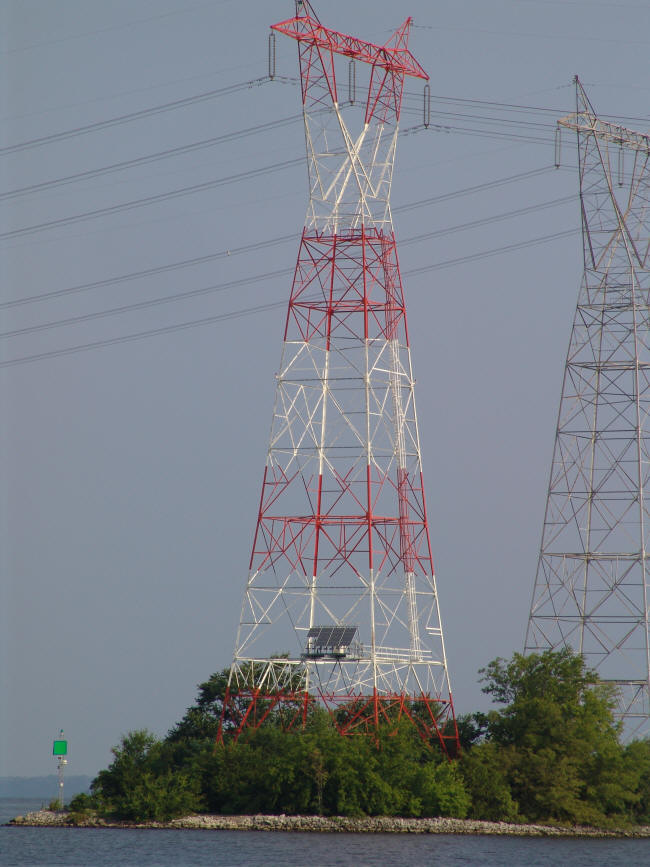
OK, while we're talking about industrial things, why is there a solar panel at the base of a 300KV power line? Can't they just tap that line for a few watts? A coil hung in the air would generate more power than that solar panel.
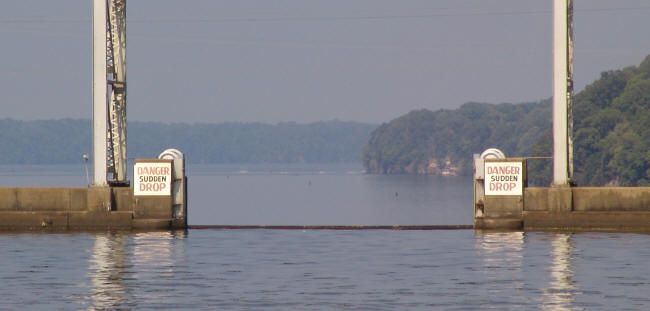
Another sign of the obvious for Darwin award applicants. I wish you could see this in 3D. It's a 95' drop. Wheeee!..... Splat.
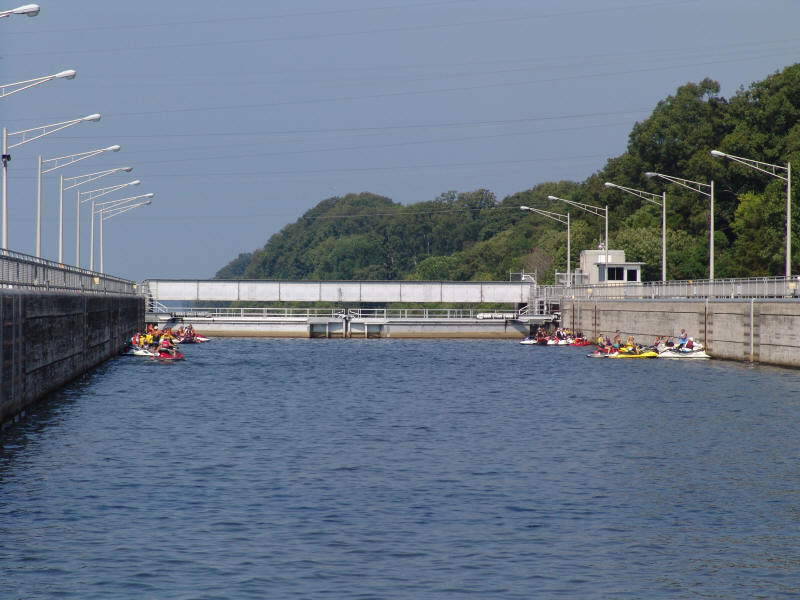
We caught up to some of the Sea-Doo group at Wheeler lock.
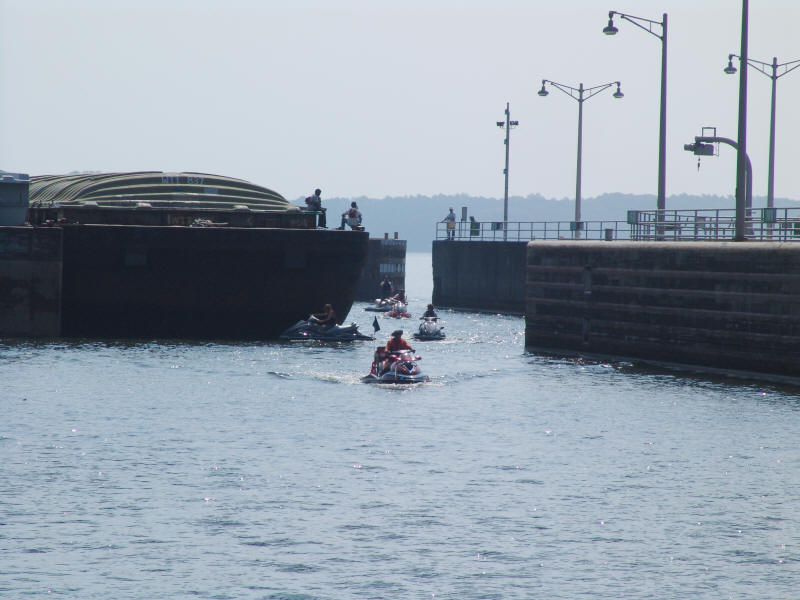
A few more Sea-Doos were filing in behind us. They had stayed overnight nearby and were quickly scrambling to get to the lock while it was available. We had to squeeze by the barge on the left like they did. It was very generous of the barge tow operator to let the recreational folks go ahead of him. The barges have priority in the locks and the entire river. Thank you!
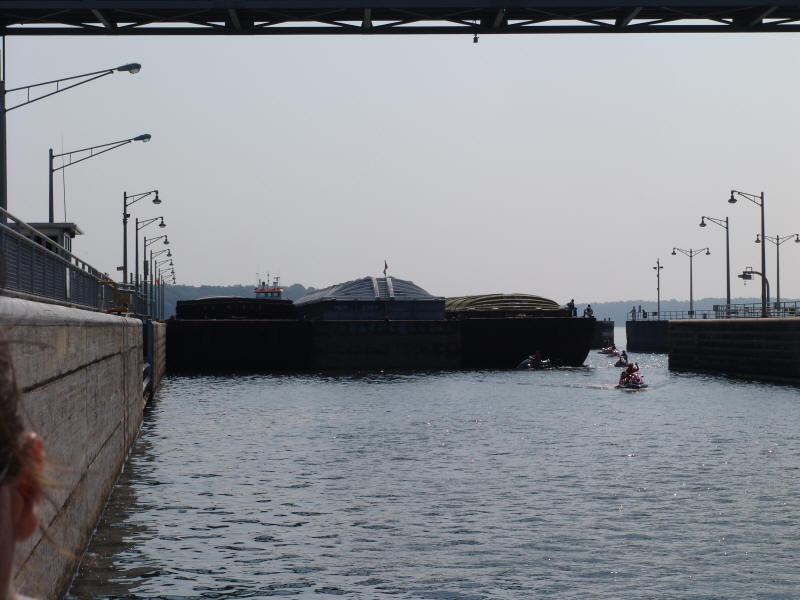
Here's the overall view, complete with Deb's ear.
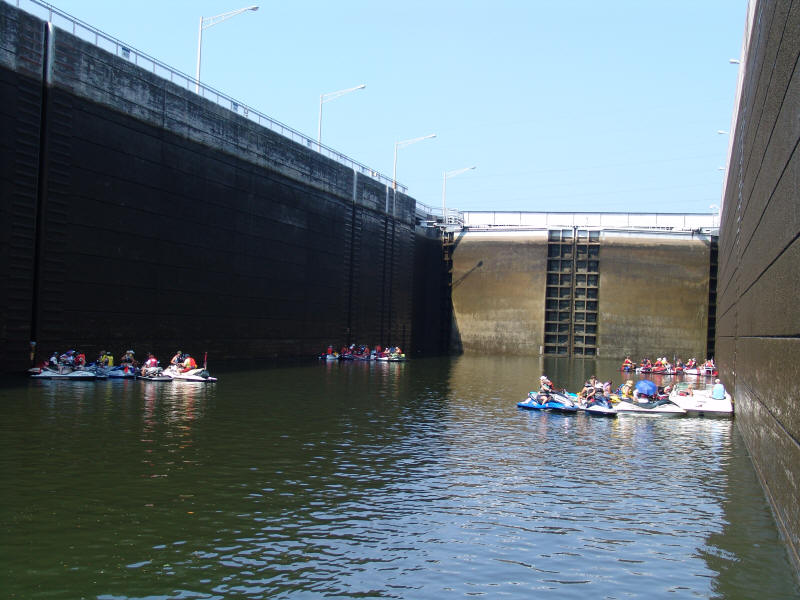
Finally, all are settled into four clusters.
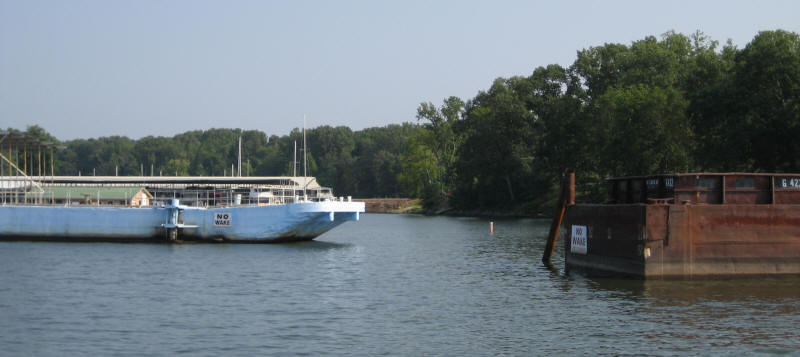
No wake for barges? Actually, this is the entrance to...

Lucy branch marina (now known as Bay Village marina) for gas. Local lore has it that those protective barges came loose during one of the more severe storms.
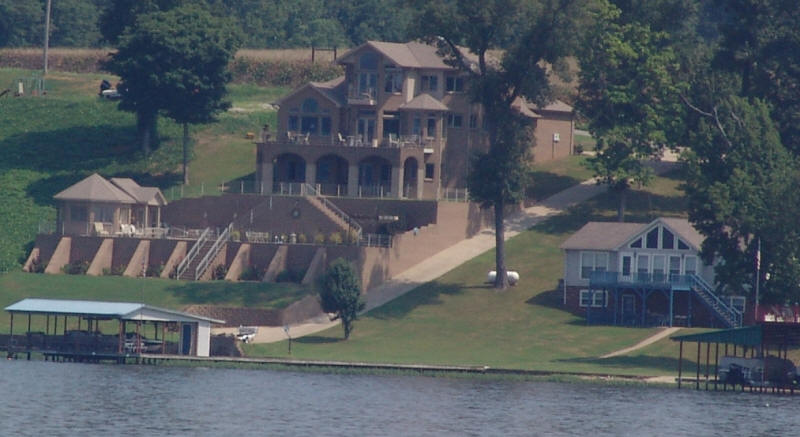
Not a bad spread, eh? This castle makes the perfectly-fine house next door look like a toy.
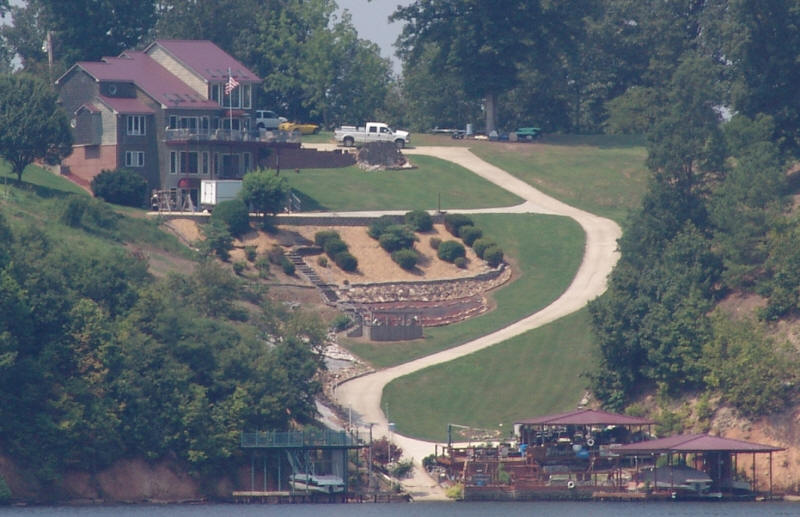
The competition for nicest spread gets tougher. A hike down that ramp will get those legs in shape.
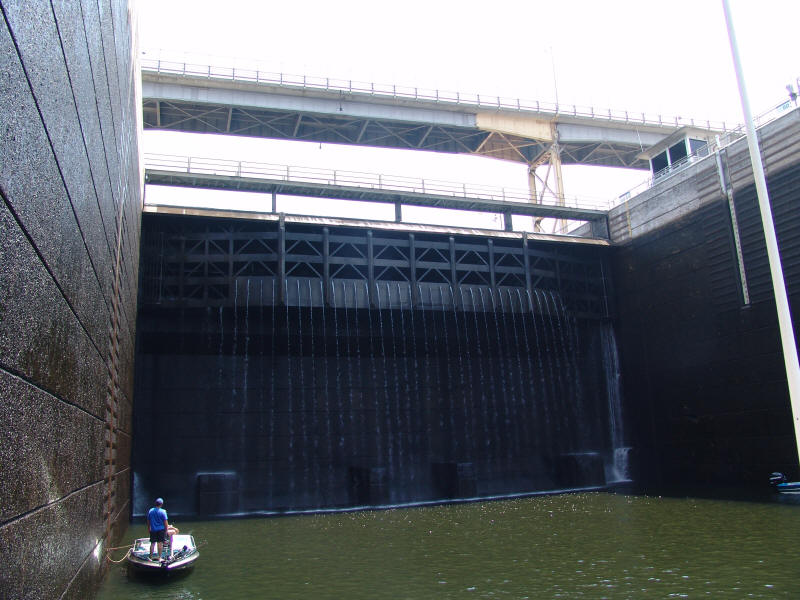
At Wilson lock, this boater is watching the upstream door leaks very carefully. It's a bit intimidating if you've never locked through before.
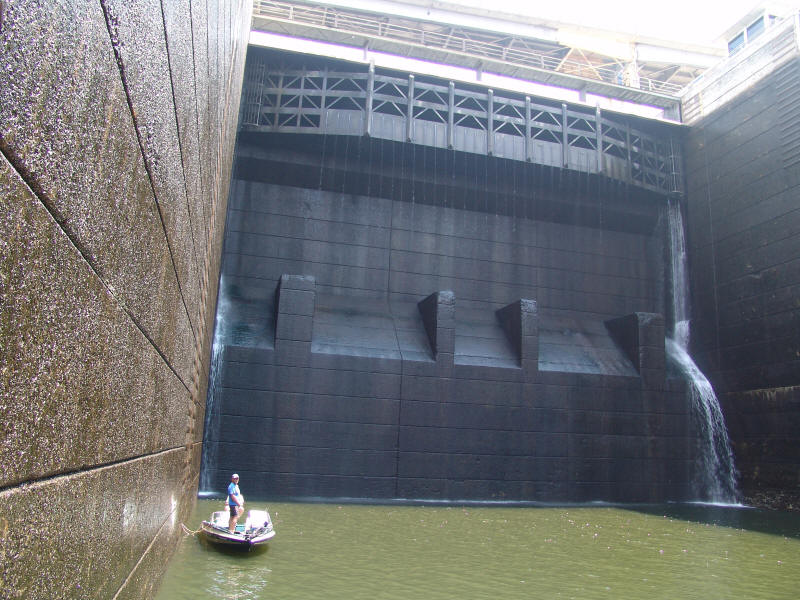
Ha! fooled ya! There was more to go!
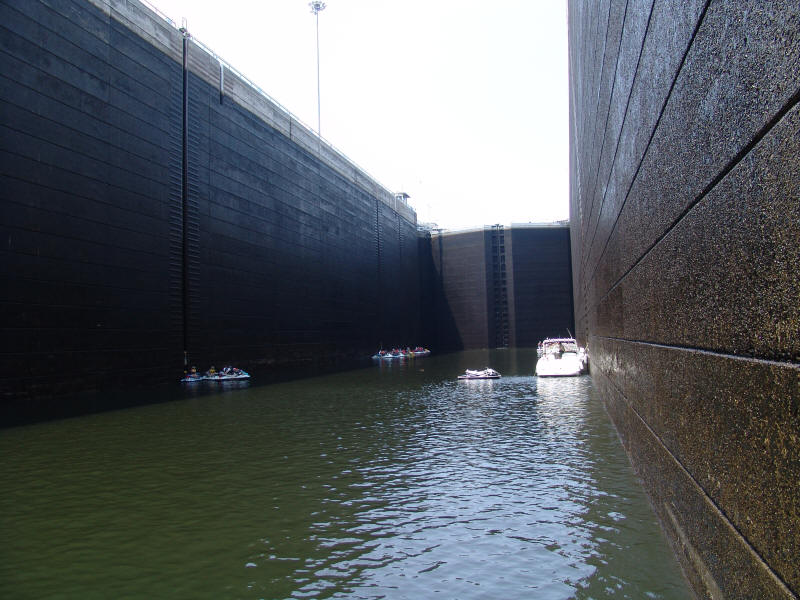
Yes, there are our Sea-Doo friends again. This lock has the biggest drop we've ever been through: 95'. Each line on the wall is 5' .
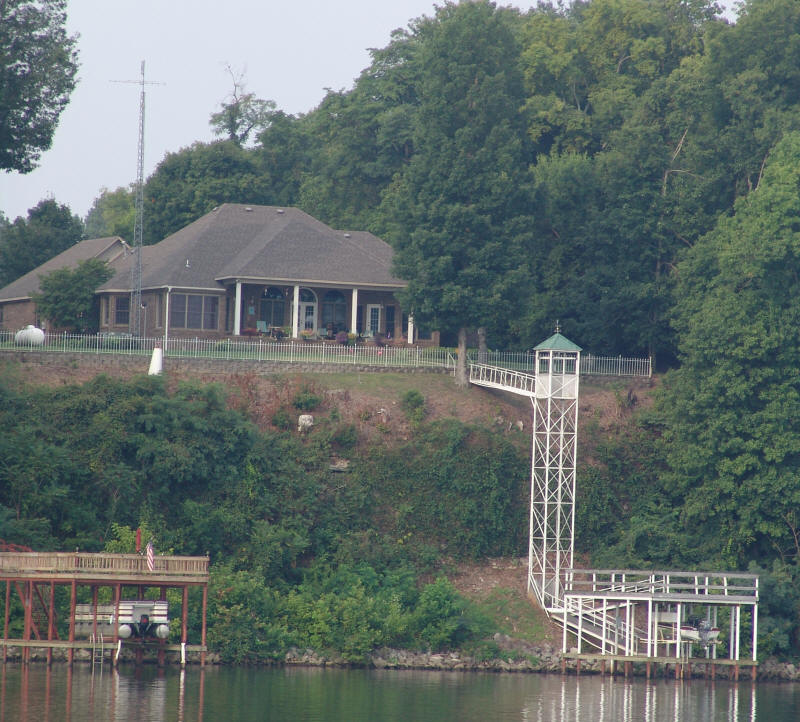
In the biggest-castle competition, this one gets an honorable mention for the dock elevator - impressive!
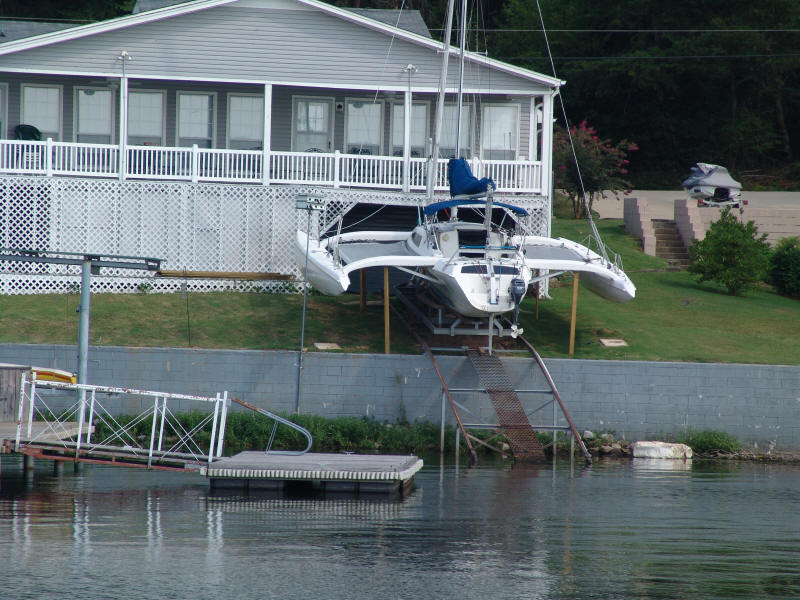
Another honorable mention for bringing the boat-to-the-house rather than walking down a ramp to the dock. Boats really do need to be on lifts due to the huge wakes. Some of the larger 45'+ recreational boats make taller wakes than the barges.

The barges tend to project their biggest wakes to the rear and not the side. It may not look like much in the photo, but these are 2-3' wakes.
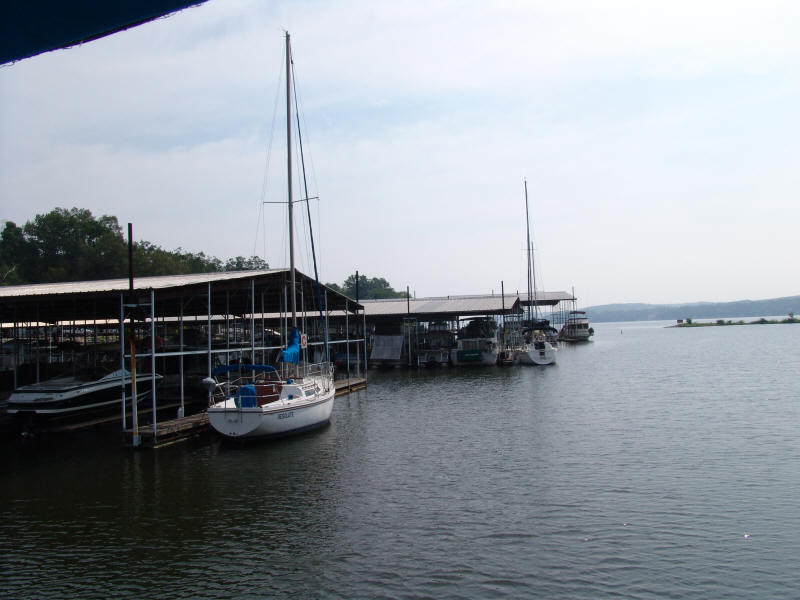
Eastport marina is off the main river and fairly well protected unless there's a strong wind driving rollers into the entrance you see here. Today it was wonderfully calm.
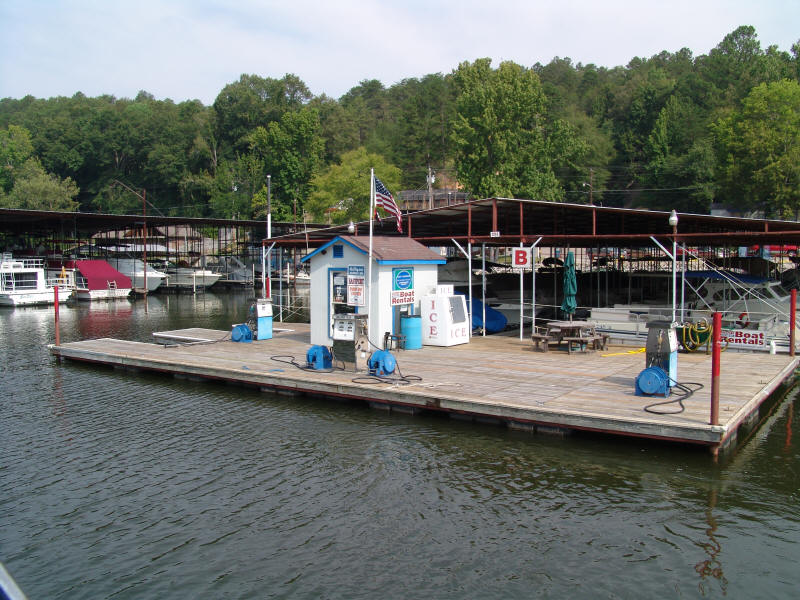
Arriving at Eastport's fuel dock to donate another $100
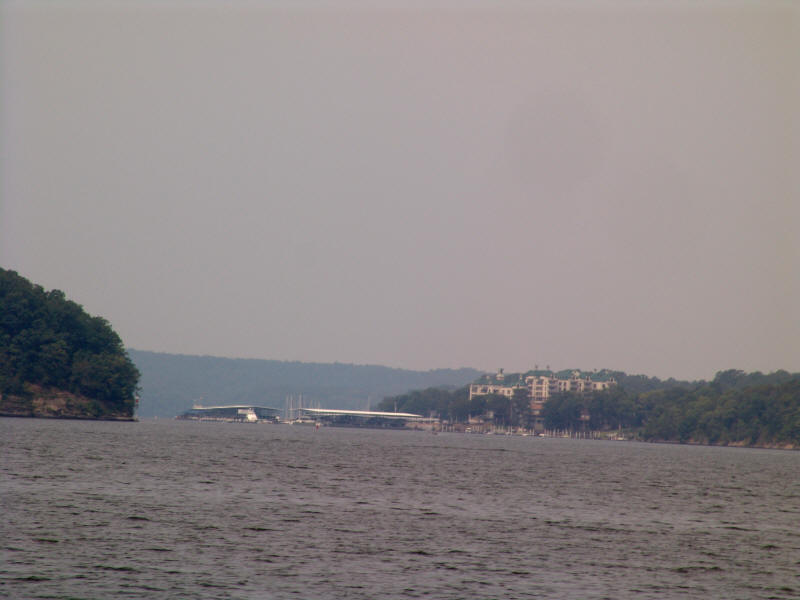
As we pass by the beginning of the Ten-Tom river, we can't help but notice the huge condos. Is there a fan club of the Ten-Tom? Some day we'll explore it and find out.
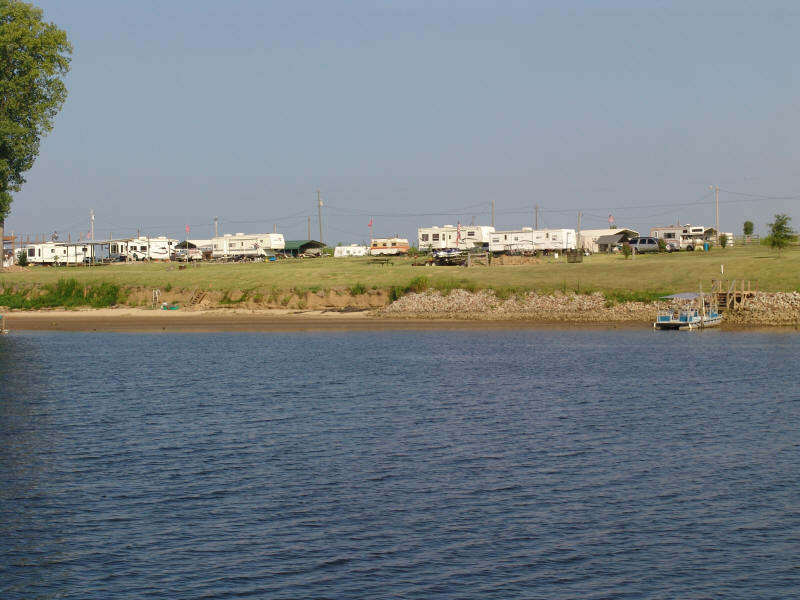
If you can't afford a castle, then you can probably afford an RV to be on the river.
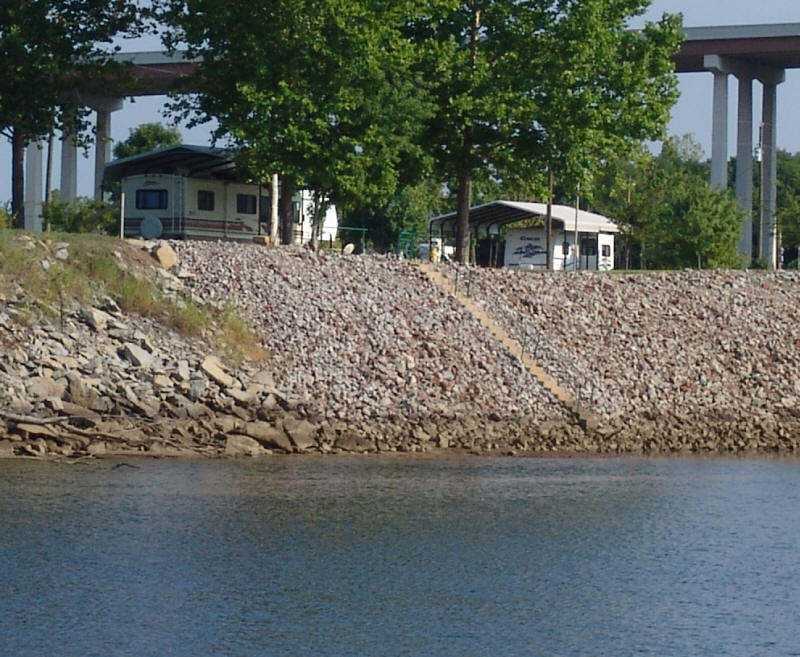
One smart idea is to buy a lot and put up an awning. That way you can be as close to the water as you want without worrying about flooding.
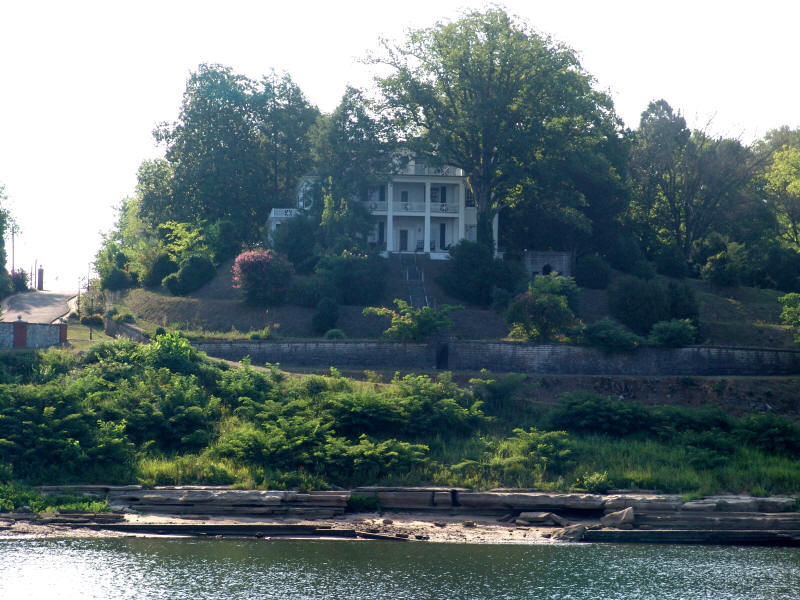
Here's a contender in the Southern Mansion category.
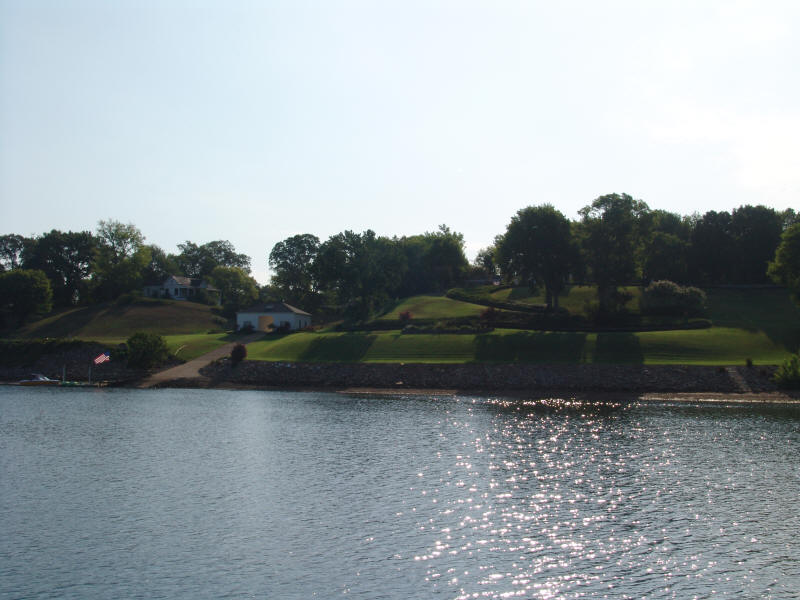
...and one for the landscaping category...
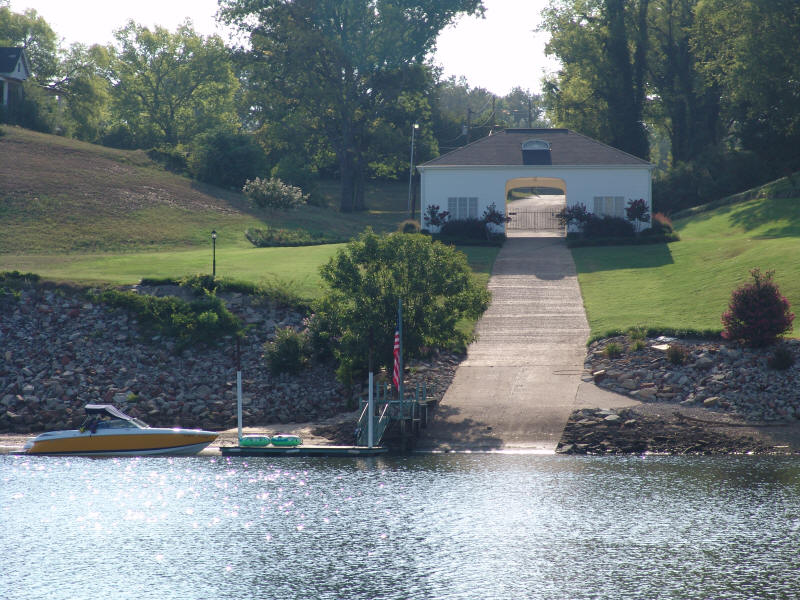
...with drive-through boat house. Hmmm, I guess he's not a sailboater.
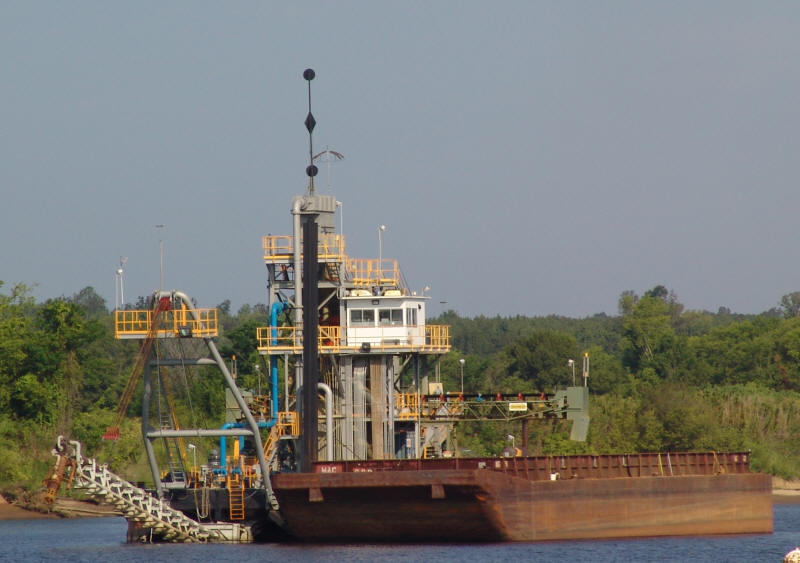
Dredging to keep the channel deep. The black stick on top with two balls and a diamond signify a dredge. Here are some more important details for recreational boaters from the Army Corps:
"POINTERS FOR DREDGING OPERATIONS - Upcoming dredging activities on Galveston Bay will further increase the importance of knowing basic rules of the road. In addition to the whistle signals, it is important that recreational boaters know the day shapes and nighttime lighting patterns for dredges. During the day, these vessels will display a ball-diamond-ball in a vertical line, usually on the centerline near the forward portion of the dredge. This is the indication that you are approaching a vessel with limited maneuverability.
Next, look for the safe side, which will be marked with two diamonds. Avoid the danger side, where the dredge pipe is connected, which will be marked with two black balls. At night, the ball-diamond-ball will be represented with a red-white-red light pattern. The two diamonds of the safe side will have two green lights, and the two black balls of the danger side will be represented with two red lights. Do not confuse these as navigation lights. Never pass a dredge until you have confirmed passing instructions with the dredgemaster on VHF Channel 13."
We didn't see a "safe side" marker, probably because it dredges from the front. We used the white buoy on the right as a safe zone marker.
Just to the right of the ball-diamond-ball tower is a silver lightning dissipater which slowly discharges electric buildup instead of allowing a big discharge (as in lightning bolt). We didn't ask the dredgemaster how well this worked.
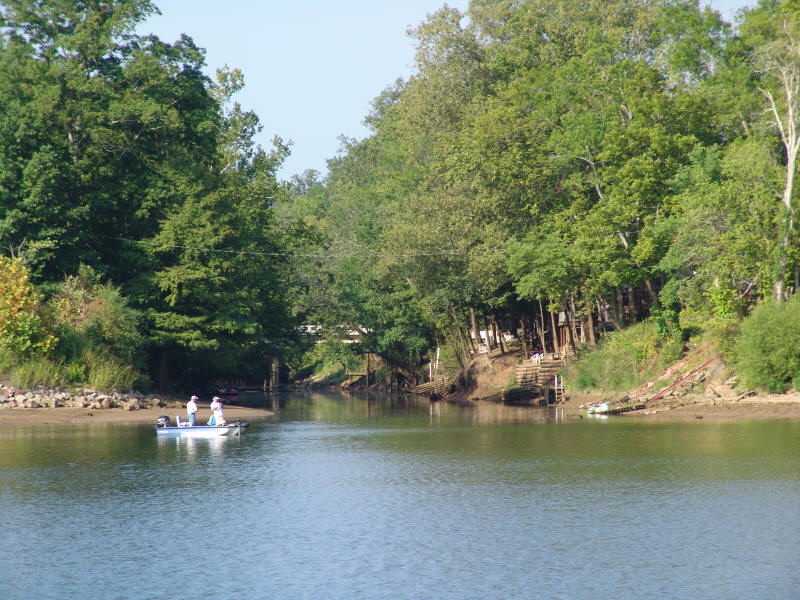
Here is Coffee Landing (TN-186), where we had originally planned to camp overnight. It looked great from Google Earth but not so great up close, so we moved on.

Nice house, nice view, but isn't the land it's built on a bit sandy?
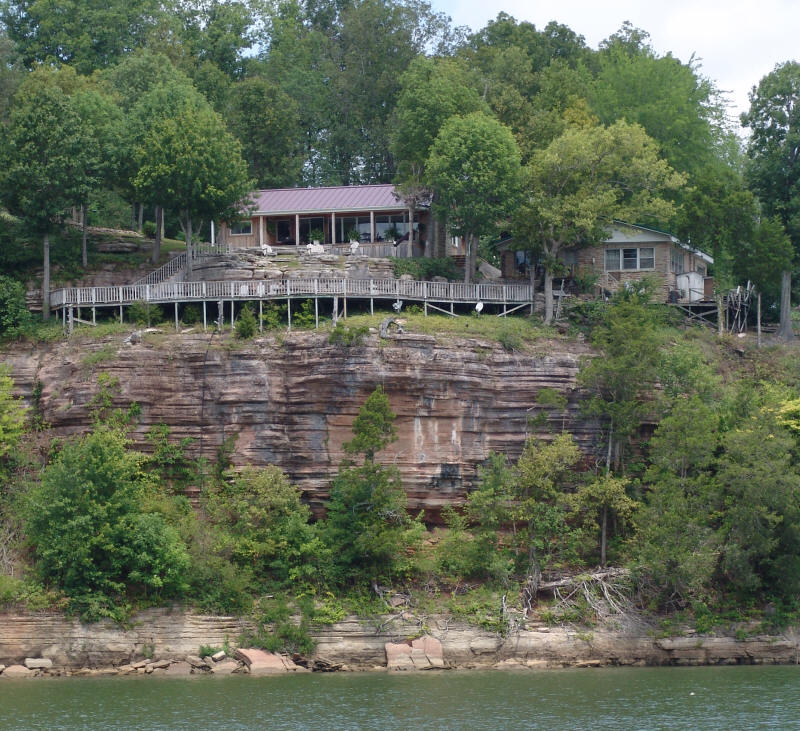
Now that looks more solid!

TN-256.3 McFarland Bottoms Park in Florence Alabama, just below the Wilson dam. Nice marina and park but it's a bit a of a hike to town.
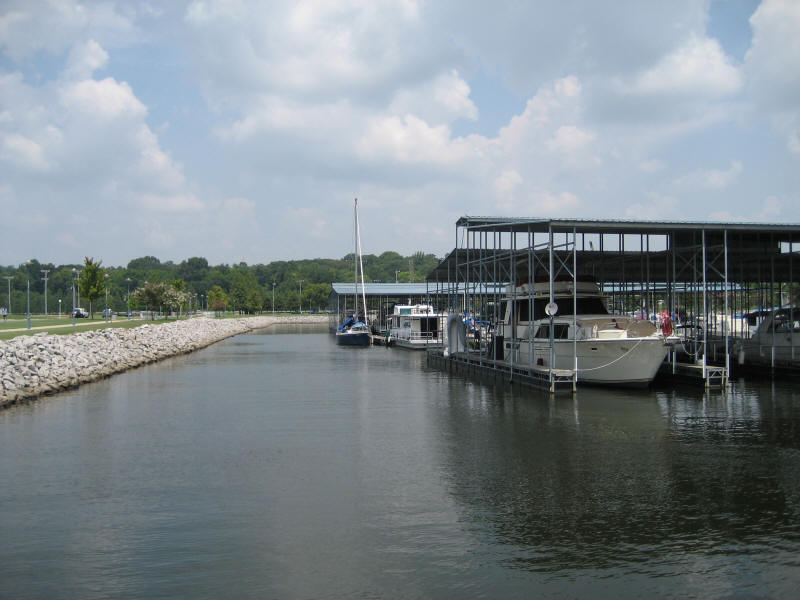
More of the Park and marina.
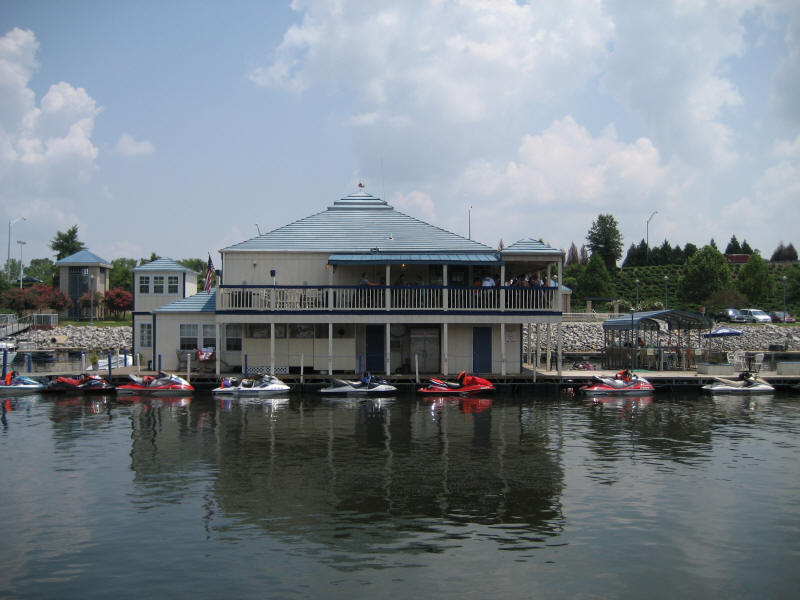
Nice restaurant and yes, those are our Sea Doo friends.
Next: Day 8 - TN-246.5 Seven mile island beach
All photos and text Copyright 2007 Paul Kempter, except for the charts which are Army Corps and Google Earth pictures. They contain watermarks. Please give credit if you copy to your personal non-profit web site. High resolution copies of the photos are available for licensing (usually free to non-profit organizations).